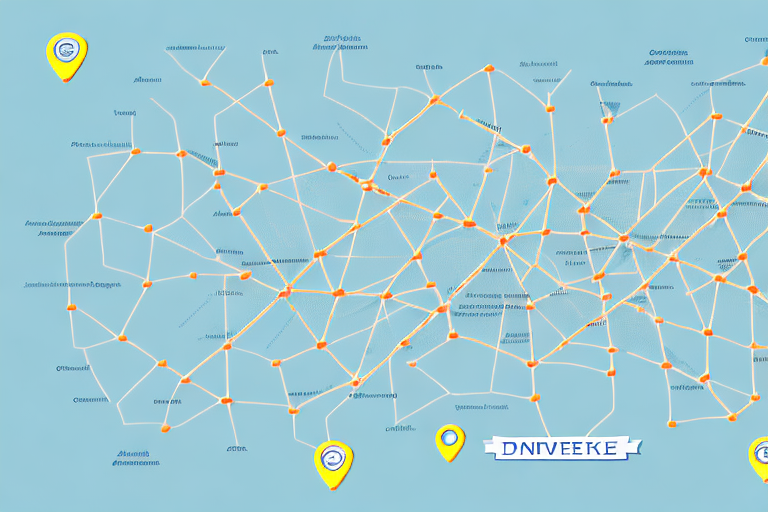Understanding Routing Systems for Courier Services
In today's fast-paced world, courier services have become an essential part of our daily lives. Whether it's sending a package to a loved one or delivering a business document, courier services play a vital role in ensuring that deliveries reach their intended destinations on time and in good condition. The success of a courier service heavily depends on its routing system.
Enhancing Efficiency with Advanced Routing Systems
Routing systems are critical in ensuring that courier services operate efficiently, reducing delivery times, and increasing customer satisfaction. These systems utilize sophisticated algorithms, GPS, and mapping technologies to determine the most efficient routes for each delivery, considering factors such as traffic patterns, road conditions, and delivery urgency.
Optimizing Delivery Routes
By optimizing routes, routing systems enable drivers to make more deliveries in a shorter amount of time. This efficiency allows courier services to handle a larger volume of deliveries, expand their client base, and scale their operations without compromising on delivery times or service quality.
Real-Time Tracking and Monitoring
Modern routing systems offer real-time tracking and monitoring capabilities. Customers can track their packages in real-time, enhancing transparency and trust. Additionally, courier services can monitor the progress of their deliveries, quickly identifying and resolving any issues that may arise during the delivery process.
Types of Routing Systems in Courier Services
Courier services can choose from various types of routing systems based on their specific needs. The most popular routing systems include:
1. Static Routing
Static routing involves pre-planned delivery routes based on predefined parameters. These routes remain constant unless manually adjusted, making them suitable for predictable delivery schedules.
2. Dynamic Routing
Dynamic routing utilizes real-time data analysis to determine the most efficient routes for each delivery. This system accounts for current traffic conditions, road closures, and other unforeseen factors, ensuring optimal route selection.
3. Hybrid Routing
Hybrid routing combines elements of both static and dynamic routing. It optimizes delivery routes while allowing for manual adjustments when necessary, providing flexibility and efficiency.
4. Machine Learning-Based Routing
This advanced routing system leverages machine learning algorithms to analyze data from previous deliveries. It predicts the most efficient routes for future deliveries and continuously adapts to new data, enhancing overall routing efficiency.
Key Components of an Effective Routing System
An effective routing system should comprise several key components to ensure optimal performance:
Real-Time Data Analytics
Real-time data analytics enable the system to make informed decisions about the best delivery routes based on current conditions.
GPS Tracking
GPS tracking allows both customers and courier services to monitor deliveries in real-time, enhancing transparency and reliability.
User-Friendly Interface
A user-friendly software interface simplifies the management of deliveries, making it easier for dispatchers to oversee operations efficiently.
Route Optimization Features
Advanced routing systems can optimize routes based on traffic and weather conditions, helping drivers avoid delays and ensure timely deliveries.
System Integration
The ability to integrate with other systems, such as inventory management and customer relationship management (CRM) software, streamlines the entire delivery process.
Benefits of Implementing Routing Systems
Implementing a routing system in a courier service offers numerous advantages:
- Reduced Delivery Times: Optimized routes significantly decrease the time taken to complete deliveries.
- Increased Customer Satisfaction: Real-time tracking and reliable delivery estimates enhance customer trust and loyalty.
- Cost Savings: Efficient routing reduces fuel consumption and operational costs.
- Expanded Delivery Capacity: Enhanced efficiency allows courier services to handle a higher volume of deliveries.
- Environmental Benefits: Reduced mileage lowers carbon emissions, contributing to a smaller environmental footprint.
Supporting Data and Statistics
According to a study by McKinsey & Company, optimized routing can reduce delivery costs by up to 20%. Additionally, companies like UPS have reported saving millions of gallons of fuel annually through advanced routing systems.
Challenges in Implementing Routing Systems
While routing systems offer significant benefits, they also present certain challenges:
- Initial Implementation Costs: Deploying advanced routing systems requires substantial upfront investment.
- Driver Resistance: Drivers may be resistant to adopting new technologies and changes in their routines.
- Data Accuracy: Routing systems rely on accurate and up-to-date data. Inaccurate data can lead to inefficient routing and delivery delays.
- Ongoing Maintenance: Regular updates and maintenance are necessary to ensure the routing system remains effective.
Overcoming Challenges
To successfully implement a routing system, courier services should:
- Invest in comprehensive training programs for drivers and dispatchers.
- Ensure robust data management practices to maintain data accuracy.
- Allocate sufficient budget for initial setup and ongoing maintenance.
Choosing the Right Routing System
Selecting the appropriate routing system involves evaluating several factors:
Business Size and Scale
Smaller businesses may benefit from simpler routing systems, while larger operations may require more sophisticated solutions capable of handling higher delivery volumes.
Type of Deliveries
Courier services specializing in same-day or time-sensitive deliveries need routing systems that can optimize routes in real-time, whereas those handling non-urgent deliveries can opt for less complex systems.
Budget Considerations
Businesses must balance the cost of the routing system with the potential benefits. Some systems require significant upfront investment, while others operate on a subscription basis.
Customization and Flexibility
The ability to customize routing systems to meet specific business needs and adapt to changing operations is crucial for long-term success.
Best Practices for Optimizing Routing Systems
To maximize the benefits of routing systems, courier services should adopt the following best practices:
Regular Software Reviews and Updates
Continuously reviewing and updating the routing software ensures that the system remains efficient and incorporates the latest technological advancements.
Driver Training
Providing comprehensive training to drivers ensures they are proficient in using the routing system and can navigate optimized routes effectively.
Continuous Monitoring and Feedback
Monitoring delivery routes and soliciting feedback from drivers and customers helps identify areas for improvement and ensures the routing system operates smoothly.
Utilizing Advanced Technologies
Incorporating technologies such as GPS tracking and predictive analytics can further enhance routing efficiency and delivery accuracy.
Case Studies: Successful Routing System Implementations
Several courier services have successfully implemented routing systems to enhance their operations:
- UPS: By adopting a dynamic routing system called ORION (On-Road Integrated Optimization and Navigation), UPS reduced its annual mileage by over 100 million miles, resulting in significant fuel savings and lower emissions. Learn more.
- DHL: DHL implemented a machine learning-based routing system that decreased delivery times by up to 30%, enhancing customer satisfaction and operational efficiency.
Conclusion
Understanding and implementing effective routing systems is crucial for the success and growth of courier services. By selecting the right routing system and adhering to best practices, courier businesses can improve delivery times, boost customer satisfaction, and reduce operational costs. As the logistics industry continues to evolve, embracing advanced routing technologies will remain a key differentiator for leading courier services.




















